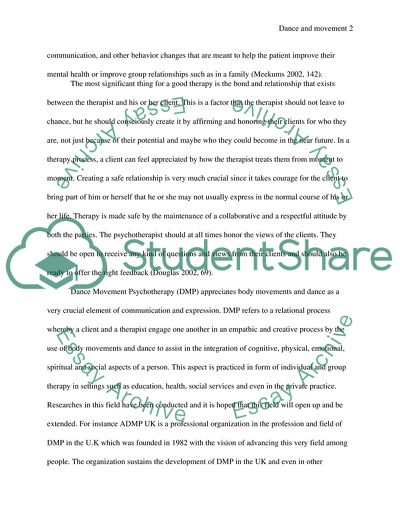Cite this document
(Movement and Dance in Psychotherapeutic Relationship Coursework, n.d.)
Movement and Dance in Psychotherapeutic Relationship Coursework. Retrieved from https://studentshare.org/psychology/1859800-why-bother-with-movement-and-dance-as-a-modality-in-the-psychotherapeutic-relationship
Movement and Dance in Psychotherapeutic Relationship Coursework. Retrieved from https://studentshare.org/psychology/1859800-why-bother-with-movement-and-dance-as-a-modality-in-the-psychotherapeutic-relationship
(Movement and Dance in Psychotherapeutic Relationship Coursework)
Movement and Dance in Psychotherapeutic Relationship Coursework. https://studentshare.org/psychology/1859800-why-bother-with-movement-and-dance-as-a-modality-in-the-psychotherapeutic-relationship.
Movement and Dance in Psychotherapeutic Relationship Coursework. https://studentshare.org/psychology/1859800-why-bother-with-movement-and-dance-as-a-modality-in-the-psychotherapeutic-relationship.
“Movement and Dance in Psychotherapeutic Relationship Coursework”. https://studentshare.org/psychology/1859800-why-bother-with-movement-and-dance-as-a-modality-in-the-psychotherapeutic-relationship.


